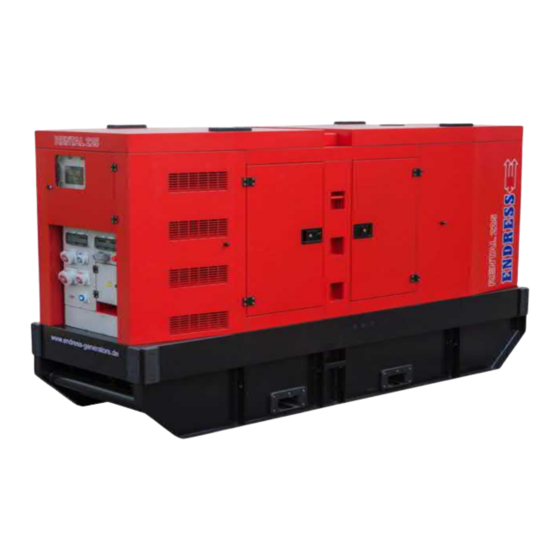
Summarization of Contents
About this manual
Constituent parts of the documentation
Describes other related documents for complete understanding.
Using this operating manual
Explains manual structure and symbols for better usability.
Symbols and formattings in the text
Details the formatting conventions for improved readability.
Product identification
Your product
Provides details on identifying the specific generator unit.
A device description and intended use
Explains what the generator does and its primary applications.
Foreseeable misuse
Outlines prohibited uses and their consequences.
Scope of delivery of your generator
Lists all items included with the generator package.
Labels on the generator
Details the various labels and their meanings on the generator.
For your safety
Safety symbols
Explains graphical symbols indicating specific hazards.
General safety instructions
Provides essential rules for safe operation and handling.
Residual risks
Identifies potential dangers not fully eliminated by design.
Authorised operating personnel – qualifications and obligations
Defines who can operate and their responsibilities.
Danger zones and work areas
Specifies hazardous zones around the generator.
Checking the electrical safety
On-site operation
Details electrical safety for mobile generator use.
Supplying power to a building
Covers electrical safety for building backup power.
Description of the device
Views
Provides an overview of the generator's components and layout.
Exhaust gas and battery side components
Details specific components on the exhaust and battery sides.
Components on the maintenance side
Describes components accessible from the maintenance side.
Components for operating panel and switch box
Identifies parts on the control and electrical panel.
Commissioning
Transporting and preparing your generator
Steps for safe movement and site preparation.
Refuelling your generator
Procedure for filling the fuel tank.
Starting the generator
Instructions for initiating generator operation.
Low load diesel engine operation
Guidance on engine operation at low load.
Turning off your power generator
Steps for safely shutting down the generator.
Turn off your generator in the event of an EMERGENCY
Procedure for immediate shutdown in emergencies.
Connection of power consuming equipment
How to connect external loads.
Residual current circuit breaker (RCD)
Explanation of RCD function and testing.
The device in-use
Operating the E-MCS 7.0 control module
Detailed guide on using the generator's control interface.
Control panel for control module E-MCS 7.0
Description of the control panel buttons and functions.
Display window on the control module's screen
How to interpret information shown on the control module display.
Select operating mode (II / TN-S)
Guidance on choosing the correct operational mode.
Direct supply mode
Specific instructions for on-site operation.
Building supply operating mode
Specific instructions for building backup power.
Insulation monitoring
Explanation and testing of the insulation monitoring system.
2-way fuel valve
How to manage fuel sources.
HARTING remote starting device
Setup and use of remote start functionality.
Optional fittings
Powerlock-Box
Instructions for connecting loads using the Powerlock-Box.
Dummy load
Explains the function and operation of the dummy load.
External battery charging
Details the optional external battery charging system.
Maintenance
Maintenance plan
Outlines the schedule for required maintenance tasks.
Maintenance work
General procedures for performing maintenance.
Starter battery
Information regarding the starter battery.
Engine oil
Information on engine oil management.
Checking the coolant
Instructions for checking the cooling system.

















Need help?
Do you have a question about the ESE 67 RS and is the answer not in the manual?
Questions and answers